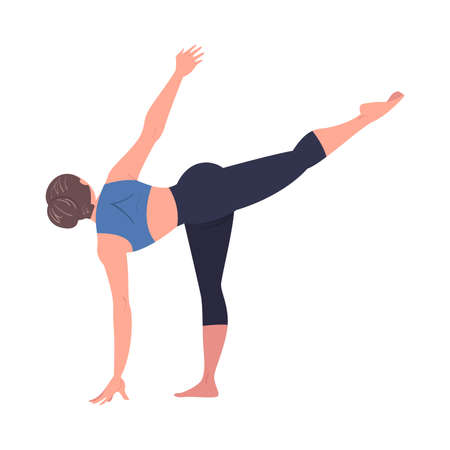1. Understanding Cellulite in the Context of British Living
Cellulite is a common concern for many individuals across the United Kingdom, yet its prevalence and perception are often influenced by unique cultural and societal factors. In the UK, discussions around cellulite tend to be shaped by a blend of clinical understanding and traditional attitudes toward body image. While medical professionals recognise cellulite as a harmless and natural occurrence—affecting people regardless of weight or fitness level—popular culture sometimes frames it as an aesthetic issue to be hidden or corrected. This cultural backdrop leads to several misconceptions, with some believing that only those who are overweight are affected, or that quick-fix solutions can offer lasting results. Additionally, the typically sedentary lifestyle associated with office-based work, variable weather limiting outdoor activities, and dietary habits rooted in convenience foods can all play a role in the visibility and persistence of cellulite among Britons. These factors present unique challenges for those seeking effective treatment and underline the importance of approaching cellulite management through holistic methods tailored to British living.
Dietary Choices Across the UK: Nourishing Skin Health
The British diet, shaped by tradition and convenience, has a profound influence on skin health and the underlying connective tissues that relate to cellulite formation. Staples such as white bread, processed meats, and fried foods are prevalent across the UK, often providing high levels of saturated fats, refined sugars, and salt—factors known to negatively impact skin elasticity and inflammatory response. Conversely, classic British fare also includes nutrient-rich options like oily fish (such as mackerel and salmon), root vegetables, and seasonal berries, all of which can support healthier skin structures when prioritised.
To enhance the effectiveness of cellulite treatment through dietary changes, it is essential to take an evidence-based approach. Research highlights that diets rich in antioxidants, omega-3 fatty acids, vitamins C and E, and adequate hydration help maintain collagen integrity and reduce localised inflammation. Below is a comparison of traditional dietary patterns versus recommended adjustments for supporting cellulite reduction:
| Traditional British Diet | Recommended Adjustments |
|---|---|
| White bread & pastries | Wholegrain breads & oats for higher fibre |
| Fried breakfasts & processed meats | Lean proteins (chicken, fish) & legumes |
| Limited fresh fruit/veg intake | 5-a-day: Varied fruit & veg for antioxidants |
| Sugary drinks & teas with sugar | Water, herbal teas; limit added sugars |
| High salt ready meals | Home-cooked meals with herbs instead of salt |
An achievable first step might be swapping out a typical “full English” breakfast for porridge topped with berries or grilled tomatoes—simple choices that promote increased fibre and vitamin C intake. Regular inclusion of oily fish provides not only protein but also omega-3 fatty acids vital for reducing inflammation within connective tissue. Additionally, choosing herbal teas over sugary beverages supports hydration without excess calories or sugar spikes. Ultimately, small yet consistent changes tailored to the UK’s food culture can significantly improve skin quality and optimise cellulite treatment outcomes.

3. Movement Matters: Incorporating Exercise into Everyday British Life
When it comes to supporting cellulite treatment, integrating regular movement into your daily routine is vital. For those living in the UK, the local environment and lifestyle provide numerous opportunities to stay active without the need for a gym membership or intensive training plans. Adopting a holistic approach means selecting activities that are not only effective but also sustainable within the British context.
Embracing Walking: The Quintessential British Activity
Walking is one of the most accessible forms of exercise, perfectly suited to the British landscape. Whether it’s a brisk walk through your local park, a gentle amble across village footpaths, or exploring National Trust trails at the weekend, walking increases blood flow and helps reduce the appearance of cellulite by improving lymphatic drainage and muscle tone. Making use of Britain’s extensive network of public rights of way encourages consistency and enjoyment.
Cycling: A Practical and Enjoyable Choice
Cycling is another excellent option that fits seamlessly into many people’s routines, whether commuting through city cycle lanes or heading out on scenic countryside routes. The temperate climate allows for year-round cycling with appropriate gear, and local cycling clubs offer social opportunities as well as motivation. Regular cycling tones the legs and glutes—key areas affected by cellulite—while also boosting cardiovascular health.
Sport and Social Activity
The British love of team sports such as football, rugby, hockey, and cricket creates further avenues to stay active. Joining a local club or participating in casual matches provides both physical benefits and community connection. Even less traditional options like Pilates classes at the village hall or dance sessions at the community centre can contribute significantly to reducing cellulite when practiced regularly.
Ultimately, finding enjoyable ways to incorporate movement into your lifestyle supports not only cellulite treatment results but also overall wellbeing. Small changes—taking the stairs instead of the lift, gardening on weekends, or joining a charity walk—can make a measurable difference over time. The key is consistency and making physical activity an integrated part of everyday British life.
4. The Role of Stress and Sleep in Cellulite Management
When considering a holistic approach to cellulite management, it is crucial not to overlook the influence of stress and sleep on skin health. The modern British lifestyle, marked by busy work schedules, frequent commutes, and digital connectivity, often leads to elevated stress levels and disrupted sleep patterns. Both factors can hinder the effectiveness of dietary and exercise interventions for cellulite.
Everyday Stressors in the UK
Many Britons experience daily stress from workplace demands, financial concerns, and social obligations. Chronic stress triggers the release of cortisol, a hormone known to break down collagen and worsen the appearance of cellulite. Additionally, high-stress environments can encourage unhealthy habits such as comfort eating or reduced physical activity—both of which are counterproductive for skin tone and texture.
Common Sleep Patterns and Their Impact
The 2023 UK Sleep Survey found that almost a third of adults get less than six hours of sleep per night. Insufficient sleep disrupts the body’s natural repair processes, including those vital for skin renewal. Poor sleep quality also exacerbates inflammation and fluid retention, both of which can accentuate dimpled skin.
Key Factors Affecting Skin Health
| Factor | Impact on Cellulite | Practical Strategy |
|---|---|---|
| Chronic Stress | Cortisol weakens skin structure; promotes fat storage | Incorporate mindfulness or yoga; take regular breaks during workday |
| Poor Sleep | Impaired skin repair; increased inflammation | Establish a consistent bedtime routine; reduce caffeine after 3pm |
| Sedentary Habits | Poor circulation; worsens fluid retention | Add short walks into daily schedule; stand up every hour at work |
Practical Tips for Stress and Sleep Management
- Mindful Moments: Use brief guided meditation apps (such as Headspace or Calm) during lunch breaks.
- Sleep Hygiene: Keep your bedroom cool, dark, and quiet—consider blackout curtains during early summer mornings.
- Routine Matters: Aim for a wind-down period before bed with herbal tea (like chamomile), reading, or gentle stretching rather than scrolling through your mobile.
- Limit Stimulants: Swap late-afternoon coffee for decaf or herbal alternatives to avoid disrupting sleep cycles.
The Takeaway for British Lifestyles
Acknowledging the realities of life in the UK—whether it’s long winter nights or city commutes—can help tailor strategies for better stress and sleep management. By addressing these foundational aspects alongside diet and exercise, individuals are far more likely to see meaningful improvements in cellulite reduction and overall skin vitality.
5. Integrating Professional Treatments with a Holistic Home Routine
While professional cellulite treatments such as laser therapy, radiofrequency, and manual lymphatic drainage can deliver significant results, their effectiveness is greatly enhanced when combined with a holistic home routine. At-home care starts with consistency: gentle dry brushing, regular moisturising with caffeine-infused creams, and the use of body rollers can extend the benefits between clinic visits. These practices help to stimulate circulation and encourage lymphatic flow—both key in reducing the appearance of cellulite.
Lifestyle adjustments are equally crucial. Small changes, like opting for a brisk walk along the Thames or swapping the lift for stairs at work, can seamlessly fit into the British daily routine and promote better skin health. Mindful eating habits, such as incorporating more whole foods and traditional British staples like oily fish, root vegetables, and porridge oats, support skin elasticity from within. Hydration should not be overlooked; while a cup of tea is a cultural cornerstone, balancing it with plenty of water ensures your body stays well-hydrated.
Traditional British self-care rituals can also play a supportive role. A warm bath with Epsom salts after a long day not only relaxes muscles but may assist in drawing out toxins and easing fluid retention. Taking time for mindfulness or even a classic Sunday countryside ramble can reduce stress—an often underestimated factor in skin health.
The key is integration: professional treatments offer a scientific boost, but it’s the steady commitment to at-home care and lifestyle choices rooted in local culture that sustains long-term results. By aligning these methods with everyday British habits, individuals are more likely to stick with their routines—making lasting improvements both achievable and enjoyable.
6. Building Sustainable Habits: Supporting Change within the British Cultural Context
Adopting consistent, long-term habits is key to maximising cellulite treatment outcomes, but sustainability often hinges on how well these habits align with one’s environment and culture. In the UK, leveraging local resources and community support can make lifestyle changes more enjoyable and enduring. Here’s a practical guide rooted in the British context.
Utilising Local Resources for Healthier Choices
The UK boasts an abundance of local produce, farmers’ markets, and seasonal foods that can invigorate any diet plan. Embrace the tradition of visiting your neighbourhood greengrocer or attending weekend markets for fresh, nutrient-rich ingredients. Many supermarkets now stock “British-grown” labels—look out for these as part of your weekly shop to support both your health and local agriculture.
Embedding Activity into Everyday Life
British towns and cities are renowned for their walkability and public green spaces. Instead of viewing exercise as a chore, weave it into daily routines by walking to work, cycling along the canal paths, or participating in parkrun events—a quintessentially British way to combine fitness with community spirit. The National Trust and local councils also offer walking groups and outdoor activities that promote regular movement without pressure.
Tapping into Community Support
Community is at the heart of sustainable change. Consider joining a local Slimming World or Weight Watchers group, where mutual encouragement helps maintain motivation over time. If gym environments feel intimidating, check out council-run leisure centres or small-group fitness classes offered in village halls—settings that often foster camaraderie and accountability.
Respecting British Routines and Social Norms
Cultural traditions such as the afternoon tea or Sunday roast needn’t be obstacles; rather, use them as opportunities to make mindful choices. Swap out heavy creams for lighter options, add more veg to classic dishes, or volunteer to host so you control the menu. Importantly, embrace the moderate, balanced approach typical of British attitudes towards food and drink—deprivation rarely leads to lasting change.
Practical Steps for Lasting Change
Start small: set achievable goals like “walk 20 minutes each day” or “add two portions of veg at dinner.” Use a diary or mobile app to track progress—many Brits find this quietly motivating. Remember that persistence matters more than perfection; occasional slip-ups are normal. By tapping into local resources, engaging with supportive communities, and respecting British cultural rhythms, you’ll lay the groundwork for long-term habits that enhance both your wellbeing and cellulite treatment results.


